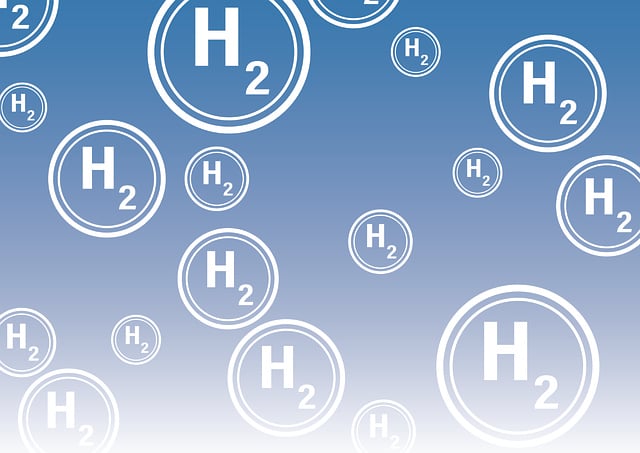
In this two-parter, we’ll look at yesteryear’s excitement over hydrogen – and ask whether it still has any future in the car industry.
Seventeen years ago, the ‘classic’ Top Gear team (Clarkson, Hammond and May) had no doubt about where motoring was headed – and where it wasn’t.
In episode 7 of the 2008 series, the team circuit-tested the new Tesla Roadster. Things seemed to be going well until the battery ran out, and Clarkson concluded that the car doesn’t work in the real world.* Later on in the show, James May opined:
So far, most electric cars have been appalling little plastic snot boxes that take all night to recharge, and then take half a minute to reach their maximum speed of 40mph, and then run out of juice miles from anywhere.
Fortunately, a better alternative would soon be with us. May introduced a car that could be “quite possibly, the most important car in a hundred years.”
It was the Honda FCX Clarity, a hydrogen fuel-cell car. May was impressed, especially by its practicality. According to the episode summary:
James sums up the film by explaining that as Human’s [sic], we have built our lives around motor vehicles, “you get in, you drive as far as you want to go, you fill up, you drive some, that is the freedom that a petrol powered car gives you”. Battery powered electric cars just don’t fit in with our lives, they just require far too much time to recharge, the Clarity though, allows us the same freedom as a petrol car. “The reason it’s the car of the future, is because it’s just like the car of today”.
So, it couldn’t be clearer how the team believed cars would evolve -hydrogen was the next stage. Indeed years later, May was still claiming “Battery powered electric cars will soon die altogether.”**
The hydrogen hope
It wasn’t just Top Gear that had faith in hydrogen – many motoring journos at the time expressed similar views. Electric cars were a fad, petrol and diesel would be around for many decades, before gradually being replaced by hydrogen fuel cell vehicles (FCEV).
That sentiment was reflected at the highest levels:
In 2013 the UK government published a wide-ranging study on the commercial future of hydrogen cars in the UK. It predicted that hydrogen cars could have a 50% share of the UK car market by 2050.
The Business Minister at the time, Michael Fallon, said that “hydrogen fuel cell electric vehicles can make a significant contribution” to “the transition to ultra-low emission vehicles. Successful commercialisation of the technology will require Government to work in true partnership with industry.”
So how’s that panning out so far? Let’s fast-forward to 2025.
Spot the hydrogen-powered car
Exact statistics for the number of hydrogen fuel-cell vehicles on our roads are hard to come by. The most recent estimates we’ve come across are from a 2023 article in The Car Expert, which reported that fewer than 300 hydrogen-powered vehicles were registered in the UK – and these were mostly buses. In three years, Toyota had sold 60 of its fuel cell equipped Mirai, whereas rival Hyundai had registered just 29 of its Nexo. As of 2021, there were about 12, 866 hydrogen vehicles on the road globally, or 0.001% of the world’s stock. Again, the vast majority of these will be commercial vehicles.
As for fuelling infrastructure, the picture is bleak:
In the UK, in 2019 there were as many as 15 hydrogen fuel stations, whereas today in 2025 only four were listed, with two potentially not in service. By contrast, according to Zap-Map, there were 39,733 public charging locations in the UK in May 2025, with 80,998 devices and 115,241 connectors. Germany is better served for hydrogen refueling, but some European countries have no stations at all, such as Spain, Portugal and Italy.
In short, things aren’t going well for hydrogen.
Still, it took a while for electric cars to get any traction – pun intended – so could the same be true for FCEVs?
Big plans for hydrogen? Not really.
To break out of a tiny niche, someone has to be able to produce a viable FCEV car at scale. And after a decade or two of research, most manufacturers are, at best, lukewarm on hydrogen. Last month, giant Stellantis announced that after a 735 million euro investment into fuel cells, it was stopping all research into the technology. Renault’s FCEV van joint venture with Plug Power recently went into receivership following a chronic lack of demand. Mercedes-Benz gave up on FCEV cars in 2020, though it’s pursuing plans for heavy vehicles. And Volkswagen? In 2023, they set out with impeccable Teutonic logic why hydrogen was a no-go for passenger cars.
Out of the big boys in the automotive world, that leaves Toyota and BMW carrying the hydrogen-powered torch. Famously sceptical of EVs, Toyota is still heavily invested in FCEVs and currently working on its third generation system. Meanwhile BMW is looking to launch an FCEV in 2028.
Unless there’s a big change in heart, hydrogen is not set to conquer the world, or even a bit of it. In Part Two, we’ll look at why.
The WVS blog covers all sorts of motoring issues, from light hearted to contentious. If you’re in South Wales, and you need your car serviced, repaired or MOTed, we’ll be here to give you a main dealer level of care at affordable prices. To book your vehicle in, or for any enquiries, get in touch. We specialise in VW Group marques like Volkswagen, Skoda, SEAT and Audi, but we’ve got shedloads of experience with other cars too.
*You might remember that Tesla sued Top Gear for misrepresenting how the Tesla performed. Top Gear won the suit.
**Though James has changed his tune more recently.
